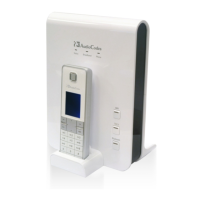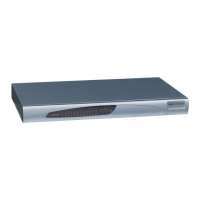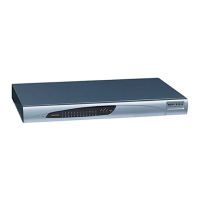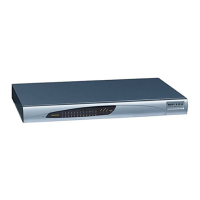CHAPTER68 Configuration Parameters Reference
Mediant 1000 Gateway & E-SBC | User's Manual
Parameter Description
Below is an example of an INVITE Request-URI with the 'tgrp'
parameter, indicating that the IP call should be routed to Trunk
Group 7:
INVITE sip:200;tgrp=7;trunk-
context=example.com@10.33.2.68;user=phone
SIP/2.0
Note:
■ For enabling routing based on the 'tgrp' parameter, the
UseSIPTgrp parameter must be set to 2.
■ For IP-to-Tel routing based on the 'dtg' parameter (instead of
the 'tgrp' parameter), use the parameter UseBroadsoftDTG.
configure voip >
sip-definition
settings > use-dtg
[UseBroadsoftDTG]
Determines whether the device uses the 'dtg' parameter for
routing IP-to-Tel calls to a specific Trunk Group.
■ [0] = Disable (default)
■ [1] = Enable
When the parameter is enabled, if the Request-URI in the
received SIP INVITE includes the 'dtg' parameter, the device
routes the call to the Trunk Group according to its value. The
parameter is used instead of the 'tgrp/trunk-context' parameters.
The 'dtg' parameter appears in the INVITE Request-URI (and in
the To header).
For example, the received SIP message below routes the call to
Trunk Group ID 56:
INVITE
sip:123456@192.168.1.2;dtg=56;user=phone
SIP/2.0
Note: If the Trunk Group is not found based on the 'dtg'
parameter, the IP-to-Tel Routing table is used instead for routing
the call to the appropriate Trunk Group.
'GRUU'
configure voip >
sbc settings >
enable-gruu
[EnableGRUU]
Determines whether the Globally Routable User Agent URIs
(GRUU) mechanism is used, according to RFC 5627. This is
used for obtaining a GRUU from a registrar and for
communicating a GRUU to a peer within a dialog.
■ [0] Disable (default)
■ [1] Enable
A GRUU is a SIP URI that routes to an instance-specific UA and
can be reachable from anywhere. There are a number of contexts
in which it is desirable to have an identifier that addresses a
single UA (using GRUU) rather than the group of UA’s indicated
by an Address of Record (AOR). For example, in call transfer
where user A is talking to user B, and user A wants to transfer the
call to user C. User A sends a REFER to user C:
REFER sip:C@domain.com SIP/2.0
From: sip:A@domain.com;tag=99asd
To: sip:C@domain.com
Refer-To: (URI that identifies B's UA)
- 1178 -
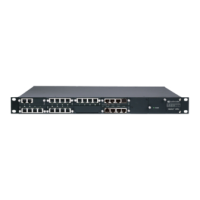
